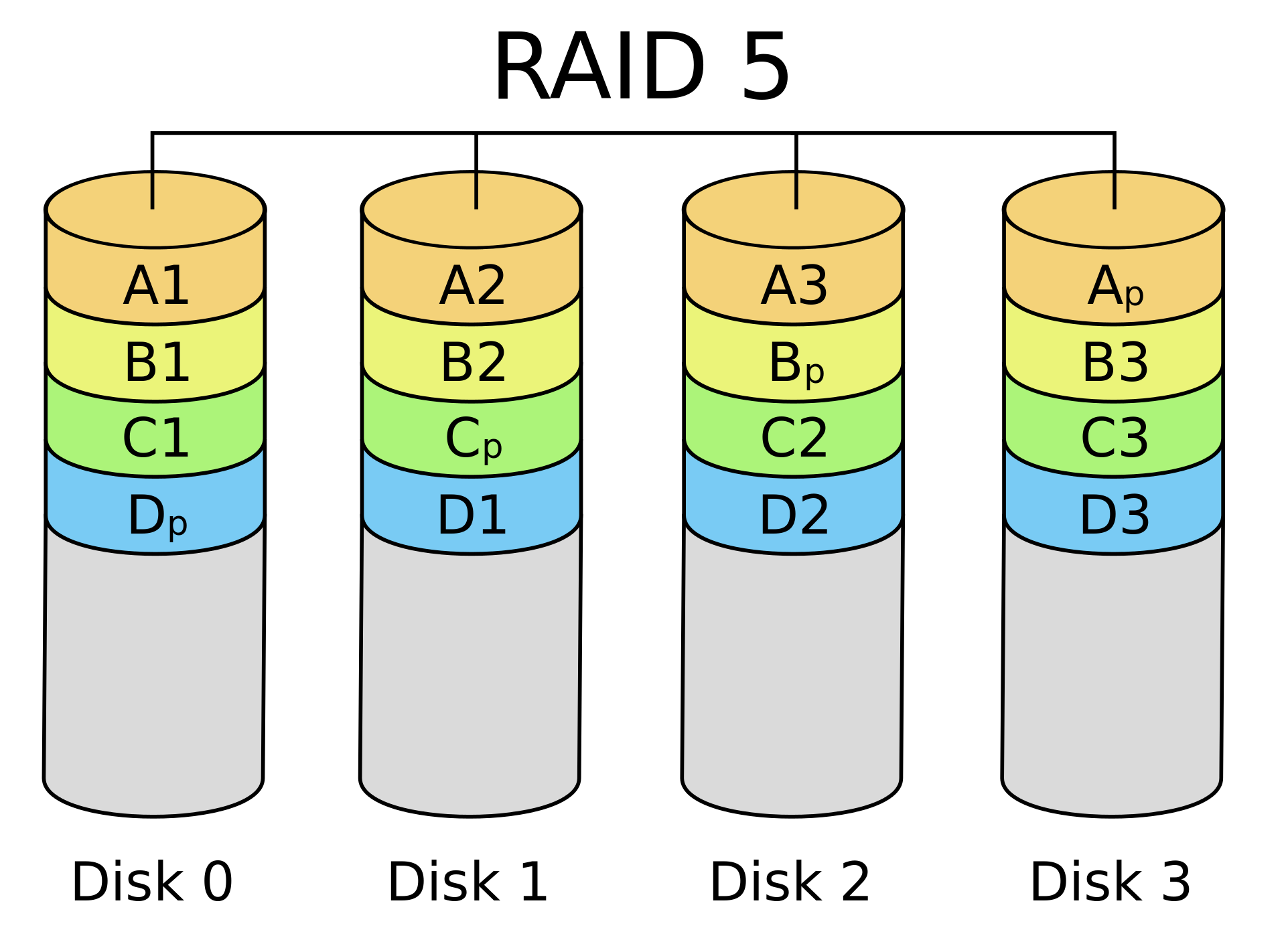RAID 5 is level of RAID that combines both block-level striping and distributed parity among the array. A standard RAID 5 array uses three disks. Data is striped in blocks, written to two of the disks, similar to RAID 0. The third disk receives parity information about the blocks of data. In RAID 5 the parity information is distributed among the disks so that a single disk will carry striped blocks of information and parity bits for other blocks.
Advantages of RAID 5
In RAID 5 if one disk fails, the RAID volume can be recreated from calculations using the remaining striped block and the parity block. Similar to RAID 0, there is read performance of data as multiple disks can simultaneously read portions of a file.
